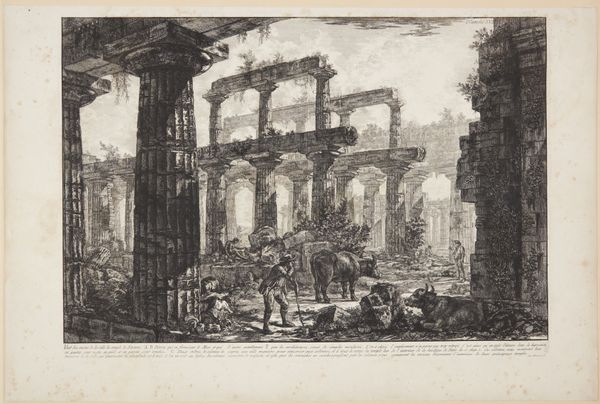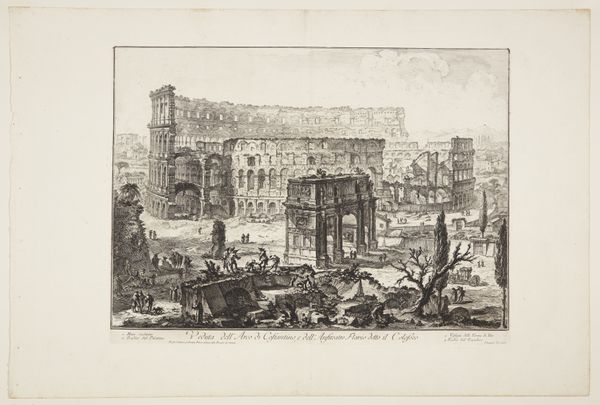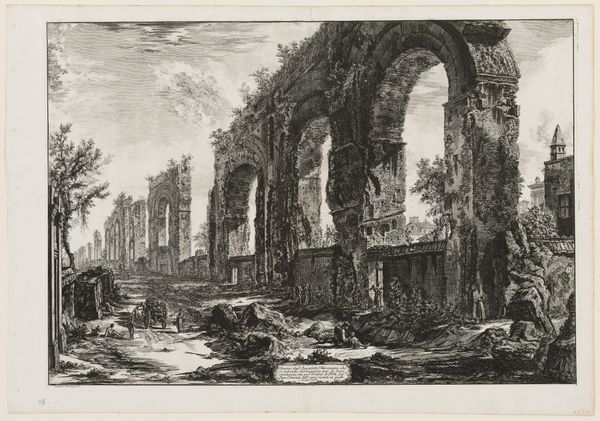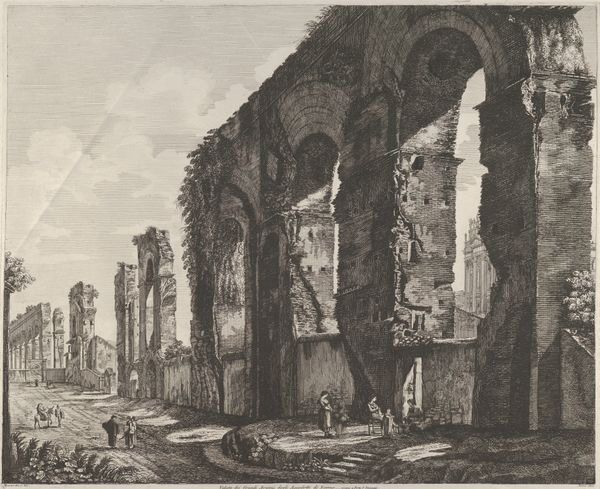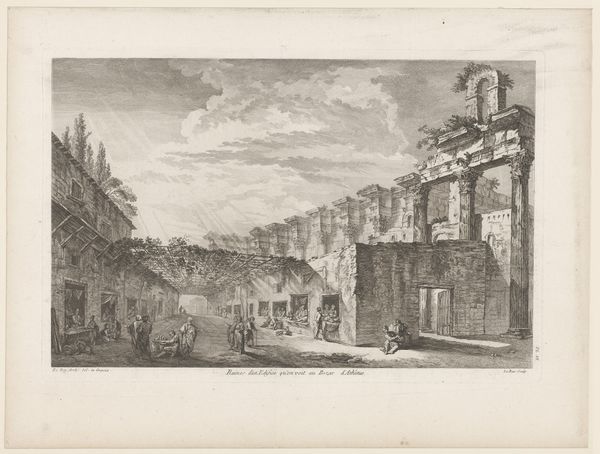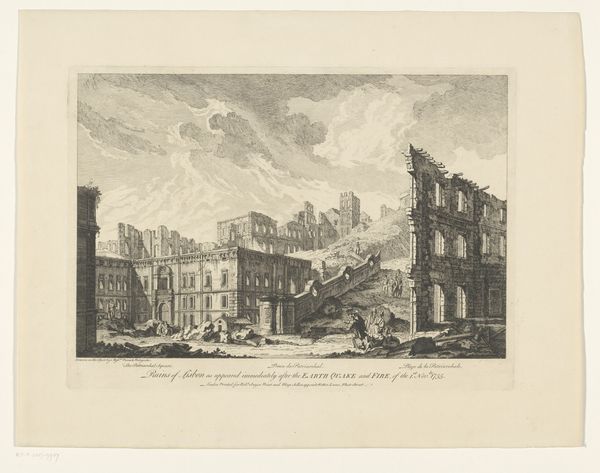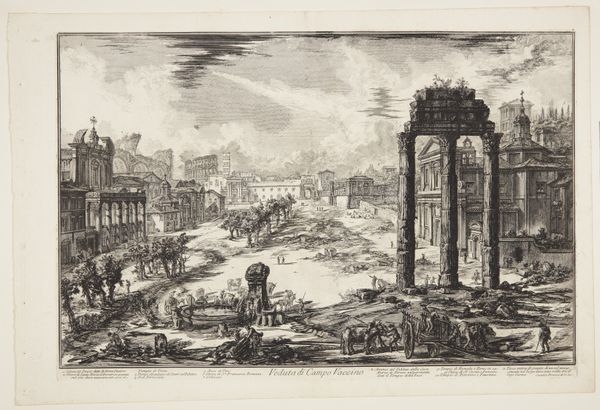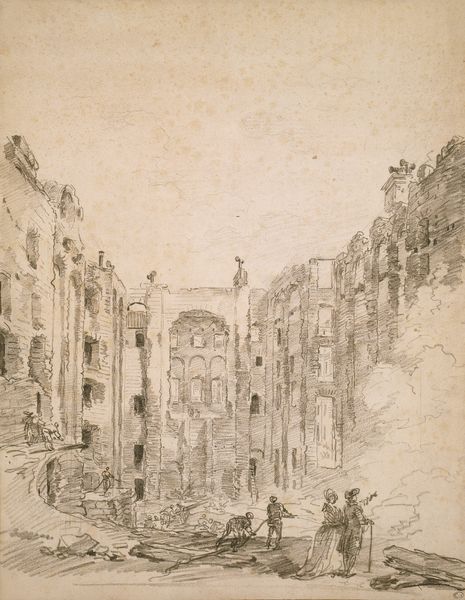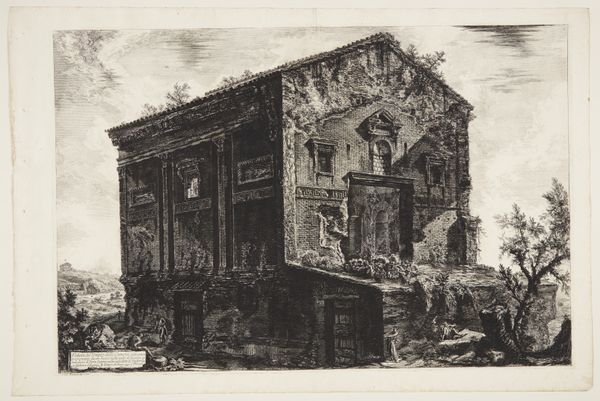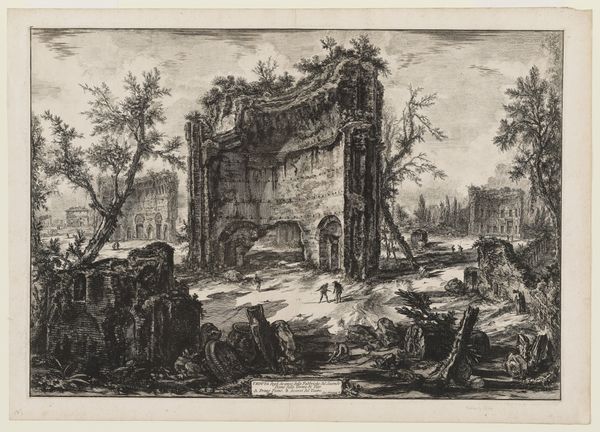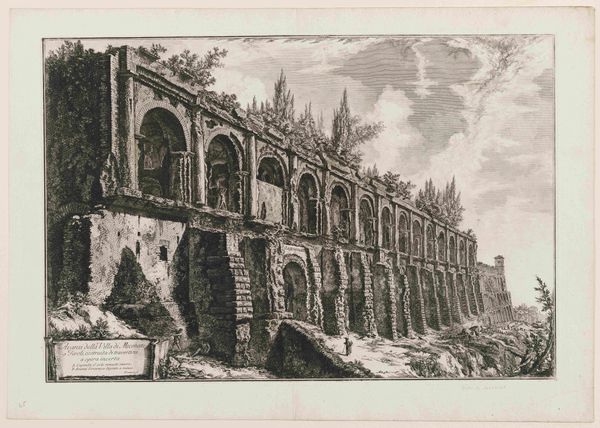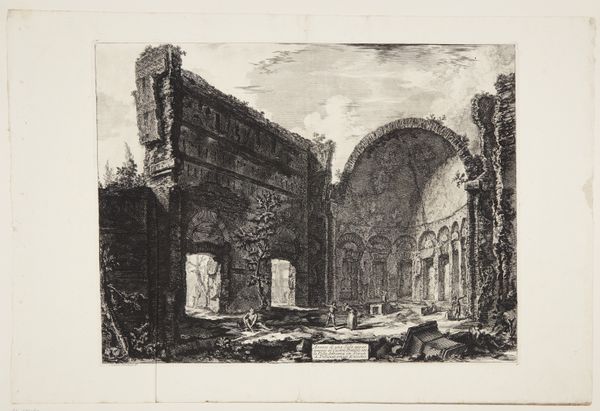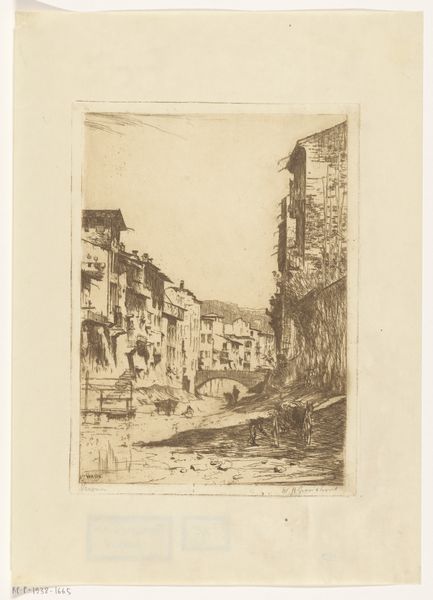
print, etching
# print
#
etching
#
landscape
#
romanesque
#
cityscape
#
italy
Dimensions: 18 9/16 x 27 7/8 in. (47.15 x 70.8 cm) (plate)20 3/4 x 28 5/8 in. (52.71 x 72.71 cm) (sheet)
Copyright: Public Domain
Editor: This etching by Giovanni Battista Piranesi, "Baths of Diocletian," created in 1774, really strikes me. The crumbling architecture against the stark light… it feels both grand and melancholic. What structural elements jump out at you? Curator: The power of this piece lies in its contrasting textures and scale. Note how Piranesi uses intricate hatching to define the rough, decaying surfaces of the Roman ruins, juxtaposed against the relatively smooth expanse of the sky. This highlights the stark contrast between the enduring structures and the passage of time. How does the size of the figures relate to the architecture? Editor: They seem dwarfed by the ruins, emphasizing the immensity of the original structure and, perhaps, the insignificance of human existence compared to the historical weight. Curator: Precisely. And consider the use of linear perspective. The lines converge dramatically, drawing the eye deep into the composition and creating a sense of limitless space, despite the confined architectural setting. Is this realistic, in your view? Editor: I see what you mean. The perspective almost feels exaggerated, creating a dramatic effect that maybe wasn’t completely there in reality. Curator: Yes, Piranesi takes liberties. This manipulation of perspective heightens the visual impact. Consider, too, the light and shadow. Notice how the sharp contrasts create a sense of drama and depth, emphasizing the three-dimensionality of the ruins. What impression does this intense chiaroscuro make on you? Editor: The light really makes the architecture seem monumental and enduring despite being ruins, but also accentuates its decay. It’s like a powerful reminder of time. I didn't notice so many interesting artistic decisions when I looked at it first! Curator: Exactly! By closely observing such components as line, perspective, and chiaroscuro, we reveal the formal qualities that evoke strong emotions. Editor: This was illuminating! I’ll be thinking about Piranesi's etching techniques and how they reinforce a mood. Thanks.
Comments
minneapolisinstituteofart almost 2 years ago
⋮
Bathing was a popular public activity in ancient Rome. In the year 298 CE, Emperor Maximian commissioned a grand bathing complex to honor his coruler, Diocletian. It took eight years for 10,000 Christian slaves to complete the enormous marble-clad brick structure. Here Piranesi shows us the remains of the frigidarium, where bathers gathered to cool themselves after washing in hot pools. The room was a whopping 840 by 480 feet (over five times larger than an Olympic-sized pool), not surprising considering that the baths could accommodate 3,000 people at one time. As it happened, Emperor Diocletian never saw the baths—he was so busy administering and soldiering in far-flung territories that he never even made it to Rome. He also proved himself something of an ingrate by forcing Emperor Maximian to abdicate.
Join the conversation
Join millions of artists and users on Artera today and experience the ultimate creative platform.
